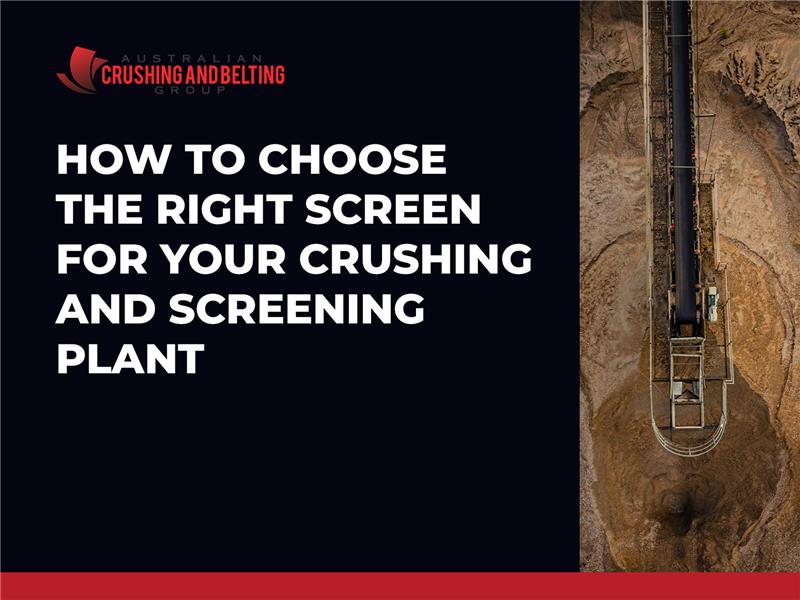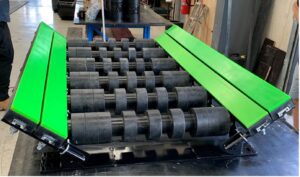Now, don’t let its humble looks fool you. That screen might not crush anything, but it decides what goes where, when, and whether it’s up to spec. Think of it as your plant’s quality control gatekeeper, traffic director, and efficiency enforcer, all rolled into one. Choosing the right screen isn’t just about plugging a gap in the flow—it’s about making your entire operation smarter, faster, and more profitable.
So how do you choose the right one? Let’s get into it.
Why the Screen Matters More Than You Think
Every crushing and screening plant has one job: turn raw material into usable product. But in reality, the rock you dig up doesn’t just fall neatly into size categories. It’s messy, inconsistent, and unpredictable.
That’s where your screen steps in—separating materials into specific size ranges. The good stuff moves on. The rest either gets crushed again or rejected. Without the right screen in place, your plant risks underperforming, overworking, and delivering inconsistent results. It’s not just about throughput. It’s about control, quality, and efficiency.
But here’s the kicker: there is no universal best screen. It all comes down to your material, your production goals, and the quirks of your site.
Start with the Material
Before looking at screen types, shapes, or tech specs, you’ve got to start with the star of the show—your material.
Are you handling granite or limestone? Wet sand or dry gravel? Fine, sticky clay or coarse blasted rock? These details matter. Hard, abrasive rock will tear through delicate screen media. Moist material will clog up tight meshes faster than you can say “downtime.”
If you don’t understand your material, you’re gambling with your setup. And in this business, that’s not a bet you want to make.
Screen Types Aren’t All Created Equal
So you’ve got a handle on your material. Great. Now comes the screen itself. While the industry uses several screen types, most operations boil down to some version of vibrating screens—either inclined or horizontal. These machines do exactly what their name suggests: they shake material across a mesh surface, allowing particles of a certain size to pass through while rejecting the rest.
Inclined screens are the go-to choice for many quarry setups. They’re rugged, reliable, and handle a broad range of material types with minimal fuss. If you’ve got a dry, relatively clean product, they’ll likely do the job well.
On the flip side, horizontal screens (and their high-frequency cousins) are more precise and better suited for fine material or high-moisture content. If you’re trying to get a tight cut or clean product from sticky feed, this could be your hero.
Then there’s grizzly screens—often installed ahead of a crusher to filter out oversized material. They don’t do precision work, but they protect your crushing equipment from unnecessary abuse.
And if you’re dealing with specialty products or odd conditions—like organic waste, wet clay, or lightweight material—trommel screens or hybrid systems might come into play. But for the vast majority of quarry and mining operations, it’s all about picking the right vibrating screen for the job.
The Screen Media Makes the Difference
Here’s where things get interesting. While the screen box does the shaking, it’s the screen media—that surface material your rock actually touches—that determines your product’s quality and the lifespan of your setup.
You’ve got options. Wire cloth is the sharpest tool in the shed, perfect for precision sizing. But it wears quickly, especially in abrasive conditions. Rubber or polyurethane media are built to last and are far more resistant to impact and wear, but they often come at the cost of slightly less precision or throughput.
There’s no right answer—only the right fit. If you need to hit tight spec ranges, you might bite the bullet and accept higher wear rates with wire cloth. But if durability is king and throughput your endgame, a hardier synthetic screen might make more sense in the long run.
And don’t forget: screen blinding (when material clogs the apertures) and pegging (when rocks get stuck) can be death to productivity. So, if you’re working with wet or sticky materials, anti-blinding options or self-cleaning screens are not just nice-to-have – they are a necessity.
Don’t Ignore the Bigger Picture
The screen doesn’t operate in a vacuum. It sits in the middle of a process flow, and every upstream and downstream decision affects how well it performs. Feed rates, crusher output sizes, moisture content, deck configuration, and plant layout—all of it ties together.
You’ve got to match your screen to the overall rhythm of your plant. If your crusher is producing more material than the screen can handle, you’re bottlenecked. If your screen is producing undersize material that your conveyor system can’t segregate, you’re wasting product.
The smartest operations think of the screen as part of the process, not just a standalone piece of gear. Because when your screen is dialed in, everything flows.
Easy to Run, Easy to Maintain
One last thing—and it’s not minor. Maintenance. The best screen in the world won’t help you if it’s constantly going down for repairs, impossible to clean, or built like a puzzle box when you try to swap panels.
Look for designs that allow easy access, quick screen media changes, and strong wear protection. Downtime costs money. Smart maintenance saves it.
And if your supplier offers predictive maintenance tools or remote monitoring? Even better. The fewer surprises, the better.
Final Thoughts: The Right Screen Is a Game Changer
A crushing and screening plant is only as strong as its weakest component—and too often, that’s the screen. But if you choose wisely, that screen becomes a powerhouse. It sorts your product, drives efficiency, protects your crushers, and helps deliver consistent, spec-perfect output day in and day out.
So don’t just “check the box” on screen selection. Ask the hard questions, look at the whole system, and tailor your setup to your material, your targets, and your site. Because when you get your screen right, everything else falls into place.






